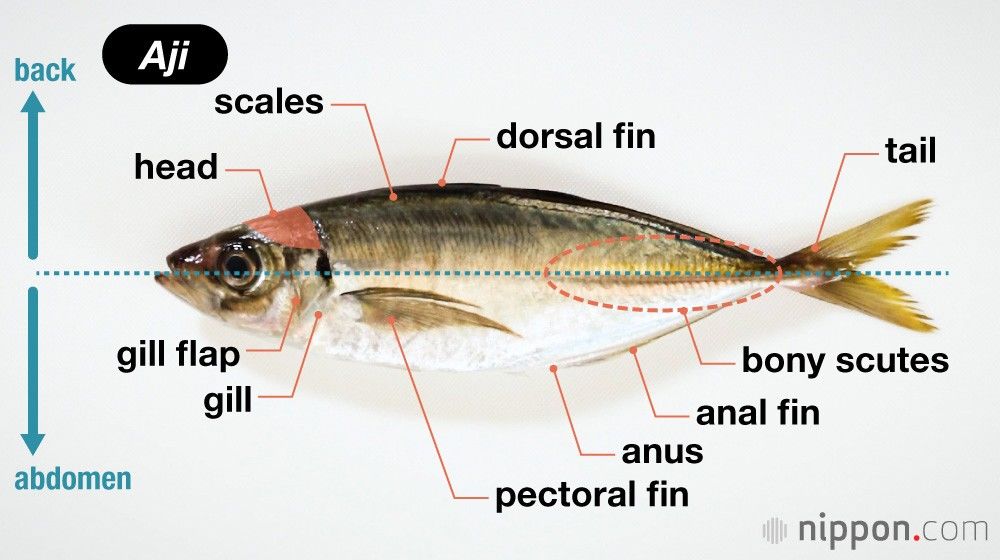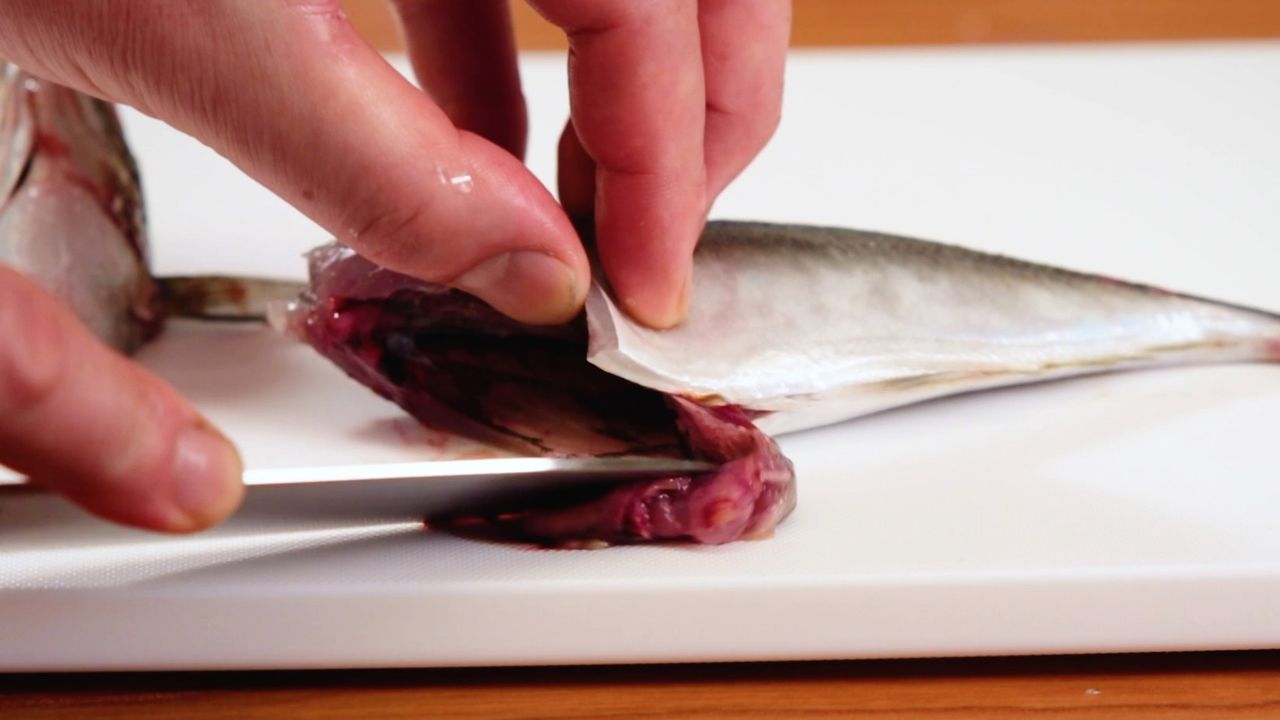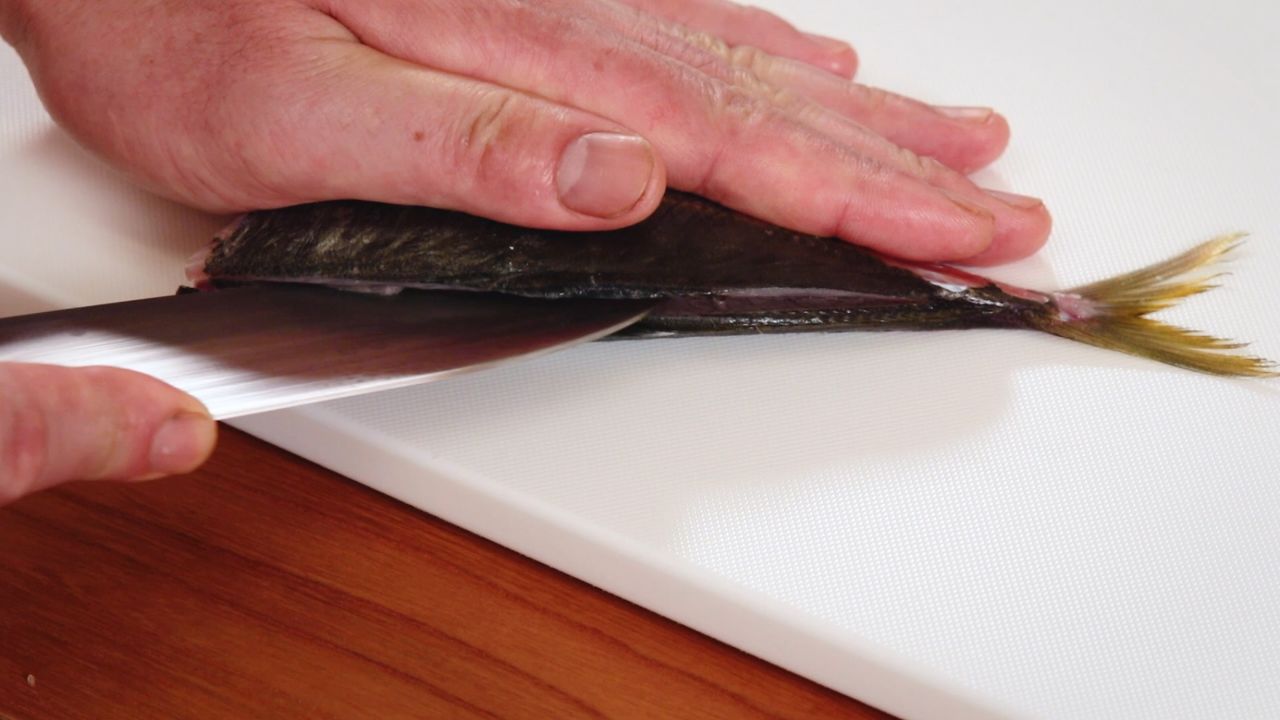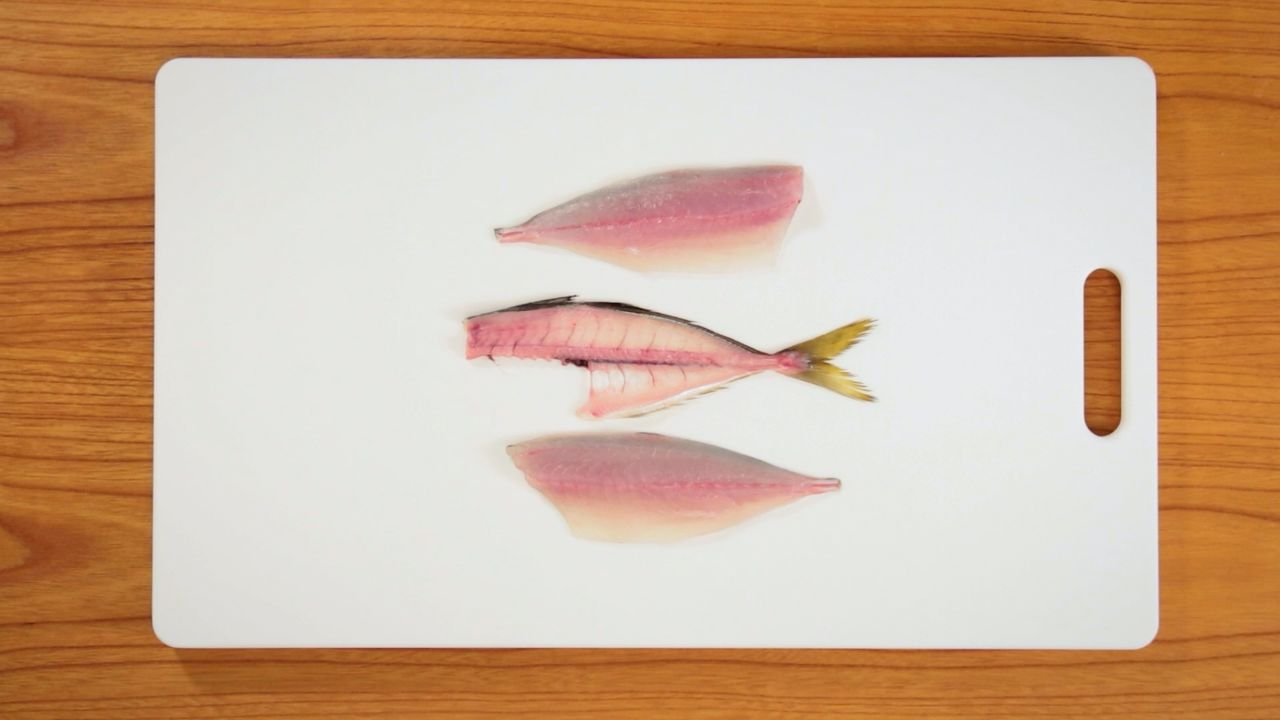
Japanese Seafood Culture: How to Fillet a Horse Mackerel
Guideto Japan
Food and Drink Lifestyle- English
- 日本語
- 简体字
- 繁體字
- Français
- Español
- العربية
- Русский
Aji (horse mackerel)
Position the fish with the head on the left and the belly facing you. (Reverse the direction of the head if you are left-handed.)
Preparation: Cutting Board and Knife
Wipe the cutting board to prevent staining or lingering odors.
When holding your knife, place the index finger lightly on the spine of the knife, which is known as the “point grip.”
Remove scales and bony scutes
Hold the fish at the head and lift the pectoral fin.
Hold the knife perpendicular to the side of the fish and scrape off the scales.
To remove the bony scutes, insert the blade of the knife at the base of the tail and slide it smoothly toward the head of the fish.
Slide the knife under the bony scute with a sawing motion, from the tip to heel of the blade, until you reach the middle point of the fish.
Turn the fish over, keeping the head in the same direction, and in the same manner remove the bony scute on the other side.
Remove head and innards
Angle the fish slightly, without flipping it. Slide the knife along the side of the fish, from the tail to the pectoral fin. When the pectoral fin stops the knife, angle the blade and make an incision.
When the knife reaches the backbone, bring the blade to perpendicular and cut through the bone.
Turn the fish over and repeat. Slide the knife along the side of the fish, from the tail to the pectoral fin. When the pectoral fin stops the knife, angle the blade, insert, and remove the head.
Insert the knife tip at the anus, make a shallow cut along the belly, and remove the innards.
Make an incision in the dark red meat near the backbone.
Wash utensils and fish
Wash your cutting board and knife well, using dish soap to remove any blood.
Wash off the scales and excess dark red tissue from inside the fish’s belly.
After washing the fish, use a paper towel or dishcloth to remove excess moisture.
Fillet fish into three pieces (sanmai oroshi)
With the tail on the left side, insert the knife along the belly and cut until you reach the backbone. (Again, directions can be reversed for left-handed cutters.)
Turn the fish 180 degrees and cut into the back, along the backbone of the fish.
Insert the blade and cut toward the tail.
Pull the knife out, turn it over, and slide it along the backbone toward the head. Remove the fillet.
Turn the fish over and cut into the back, along the backbone of the fish.
Turn the fish 180 degrees, insert the knife along the belly, and cut until you reach the backbone.
Insert the knife near the tail, slicing toward the tail. Pull the knife out, turn it over, and slide it along the backbone toward the head. Remove the fillet.
Insert the knife underneath the belly bones and slice them away.
Lift the thin slice away from the meat with your free hand, hold the knife perpendicular to the cutting board, and cut the slice off.
Repeat to remove the belly bones on the reverse side.
Lay out the three pieces, and you’re done!
(Prepared based on the Sabakeru Channel. All photos courtesy the Nippon Sabakeru Project.)
sushi cuisine sashimi fish environment sustainability ocean washoku


























